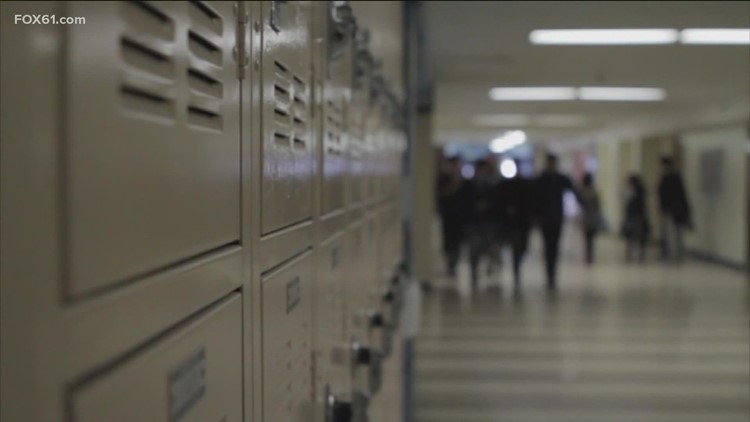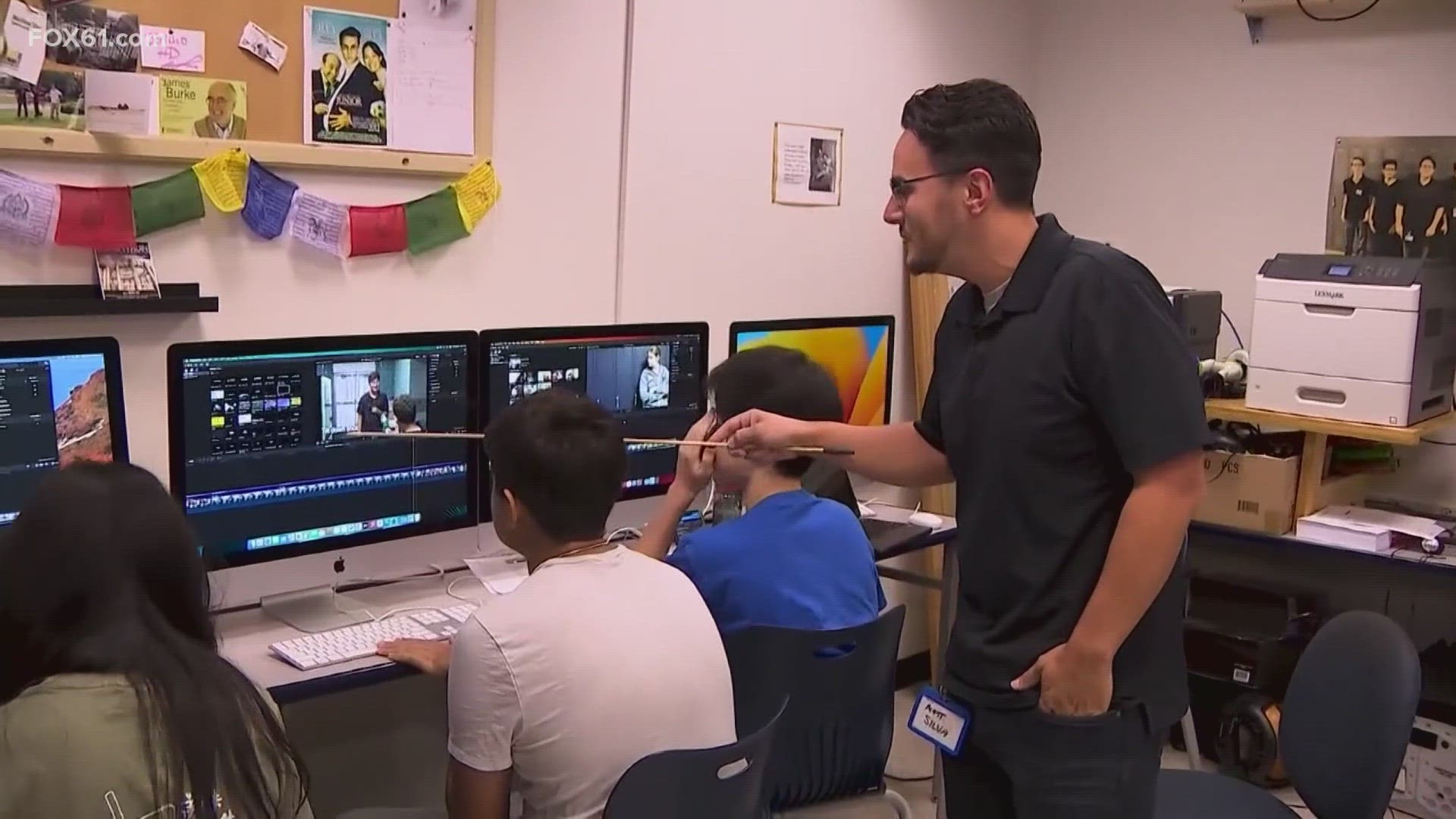HARTFORD, Conn. — The parties in the Sheff v. O'Neill case that has spurred decades of work to correct racial segregation in Connecticut announced a final settlement to the case on Thursday.
Attorney General William Tong presented a final settlement in the case to the State Supreme Court. If the court accepts the terms and it is approved by the legislature, the state said the agreement will "provide a historic investment in educational opportunities for Hartford students and will end over 30 years of litigation and court oversight."
Gov. Ned Lamont, Elizabeth Horton Sheff - the main plaintiff's mother - Tong, and others will hold a press conference at 4 p.m.
, "This agreement will make school choice programs for families in the Hartford region more accessible and transparent as we continue our work to improve quality and equity for students in all schools. I thank everyone for their hard work in getting all involved parties to this point and bringing us closer to our shared goal of equal access to a quality education,” Lamont said in a statement
Originally filed in 1989, the case took its name from an elementary school child, Milo Sheff, who has long since graduated and celebrated his birthday on Thursday, and a governor who left office 31 years ago. The case was filed in order to address inequities in education between Hartford schools and other communities in the state. It is considered a landmark civil rights lawsuit, working to provide equal students access to quality, integrated public education in Connecticut.
The agreement will require presentation first to the Superior Court for preliminary approval, then to the General Assembly for its approval, and then back to the Court for final approval. Attorney General Tong said, “If approved, the agreement would avoid the potential for a court-ordered plan and keep overall decisions about educational policy and finance in the hands of those elected to do so-- the Governor and legislature.”
According to the Attorney General’s office, highlights of the settlement include:
- To the extent necessary to meet demand for Choice seats by Hartford students, the State will increase available Choice seats over the number of available seats in 2020-21 by up to 783 seats by 23-24, up to 1,863 seats by 25-26, and up to 2,737 seats by 28-29.
- By 2025-26, the state expects to meet entry grade demand for Hartford students for Choice schools operated by Hartford and others.
- By 2028-29, the state expects to meet demand for Hartford students for all grades in Choice schools.
- The state will continue to make ongoing adjustments to continue to meet demand as it changes over the years, with continuing measurable assessments of demand in 2031-32 and every three years thereafter.
- Ongoing court jurisdiction will end with the approval of this agreement. The state will be subject to an injunction for 10 years requiring its continued compliance with the material terms of the agreement, but there will no ongoing court involvement unless there is a claim of material noncompliance.
- State funding will include the costs of all additional seats identified above, to the extent needed to meet demand. In addition to added seats at existing Choice magnet schools, the State will provide financial incentives for suburban Open Choice schools to accept additional Hartford students up to a goal of 450 new seats over existing Open Choice seats. Open Choice is a voluntary program that enables Hartford students to attend suburban schools, and for suburban students to attend Hartford schools.
- In addition, new or expanded programs include the following:
- a dual language magnet at Dwight-Bellizzi School in Hartford, beginning with PK4 and phasing-in through 8th grade year-by-year.
- A new Goodwin University early literacy preschool Choice program in a renovated building in Rocky Hill.
- a new Goodwin University technical high school magnet, focused on advanced manufacturing, in a renovated building on the Goodwin property for 9th-12th grade students.
- Addition of early college programming at Connecticut IB (International Baccalaureate) Academy in East Hartford with expansion to capacity.
- Retheming and expansion of Two Rivers and Civic Leadership magnet schools to focus on computer programming and coding with partnerships with Amazon and Microsoft.
- Implementation of a half day program at Goodwin University for Hartford and suburban students for Early College Advanced Manufacturing Pathway™ (ECAMP™) model to expand opportunities for dual-credit programming.
- Expansion of pre-k programs in existing magnet schools.
Because certain current Choice schools are not presently meeting diversity and reduced racial isolation goals, the agreement also provides for $12.6 million beginning in FY23, to reorganize those schools to make them sufficiently attractive to appeal to a more diverse student body.
Among other things, those efforts will include:
- $6.8 million to provide or increase athletics at magnets
- $7.8 million for enhanced extracurricular offerings at magnets
- Continuing audits and enhancements for schools that are not yet meeting diversity goals
- Additional financial and other supports to help all Open Choice and magnet schools become more welcoming and inclusive to all students
In total, the agreement commits $1.24 million in additional magnet school funding for Fiscal Year 2022, with commitments increasing to $32 million annually by Fiscal Year 2032. Capital costs associated with renovation of the new magnet schools are estimated at $48.7 million.
The case was filed on behalf of Sheff, a fourth-grade student at Annie Fisher School at the time, and 16 other students. Most lived in Hartford, and some lived in surrounding towns. Milo's mother Elizabeth Horton-Sheff went on to be elected to the Hartford Common Council in the 1990s. "O'Neill" was Bill O'Neill, who served as governor from 1980 to 1991. He died in 2007.
The state supreme court ruled on the case in 1996, that "the racial and socioeconomic isolation of Hartford schoolchildren violates the state constitution," according to a website dedicated to the case. The court did not provide remedies to resolve the issue, however.
In 1997, the state legislature passed a bill, signed by then-Gov. John Rowland, that called for the state to take over the Hartford school system for five years, a commitment to early childhood education, and a two-way voluntary integration program, giving Hartford students the opportunity to go to public schools in the suburbs, and suburban students the opportunity to attend public schools in Hartford, at no cost to the student’s family.
Prior to the legislative action, Hartford entered into an agreement with a private company, Education Alternatives Inc, or EAI, to manage the schools in 1994. The company pulled out after several controversial years.
In early 2003, the state legislature approved a Phase II settlement to part of the Sheff case which would allow for eight magnet schools to be established in Hartford.
Five years later, the state and the plaintiffs agreed to a new five-year settlement, Phase III, that called for more magnet schools and more opportunities with the Open Choice program.
According to the Center for Children's Advocacy, when the goal of having 41% of Hartford school children being in "reduced isolation settings" wasn't met, Phase 2 was extended a year. That goal was met within a year. That number was later increased to 47.5% of the students and then later 50%. The latter goal was not met by 2017, and the plaintiffs sought further implementation of the original ruling. In August, the superior court agreed.
An agreement in 2020, substantially increased the seats available to Hartford students in more diverse settings and ensure that all students who want to take part in the voluntary school choice program to be able to participate. The protocols for entry into the school choice program were changed to be based on socioeconomic status.
Doug Stewart is a digital content producer at FOX61 News. He can be reached at dstewart@fox61.com.
---
Have a story idea or something on your mind you want to share? We want to hear from you! Email us at newsteam@fox61.com
HERE ARE MORE WAYS TO GET FOX61 NEWS
Download the FOX61 News APP
iTunes: Click here to download
Google Play: Click here to download
Stream Live on ROKU: Add the channel from the ROKU store or by searching FOX61.
Steam Live on FIRE TV: Search ‘FOX61’ and click ‘Get’ to download.



